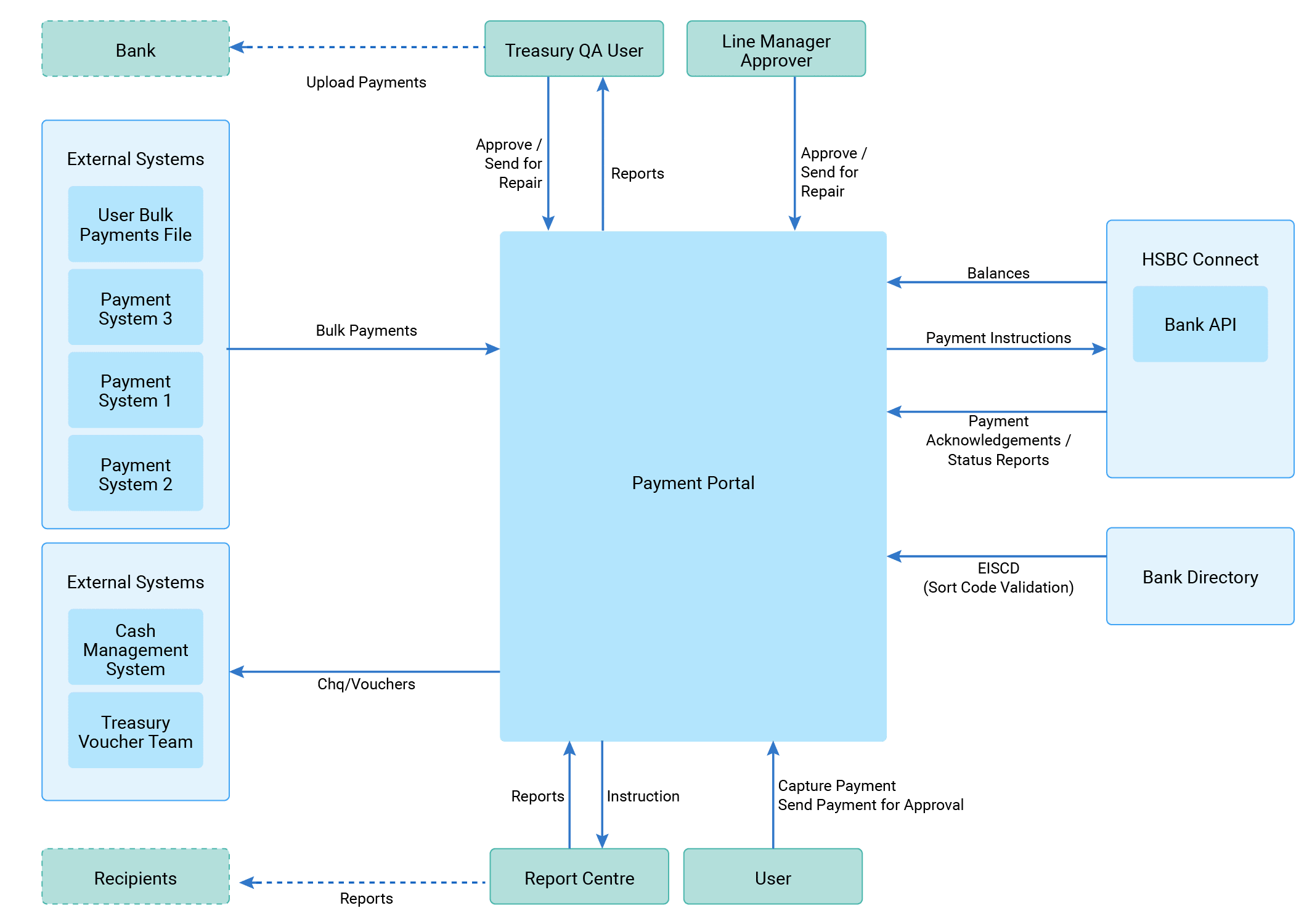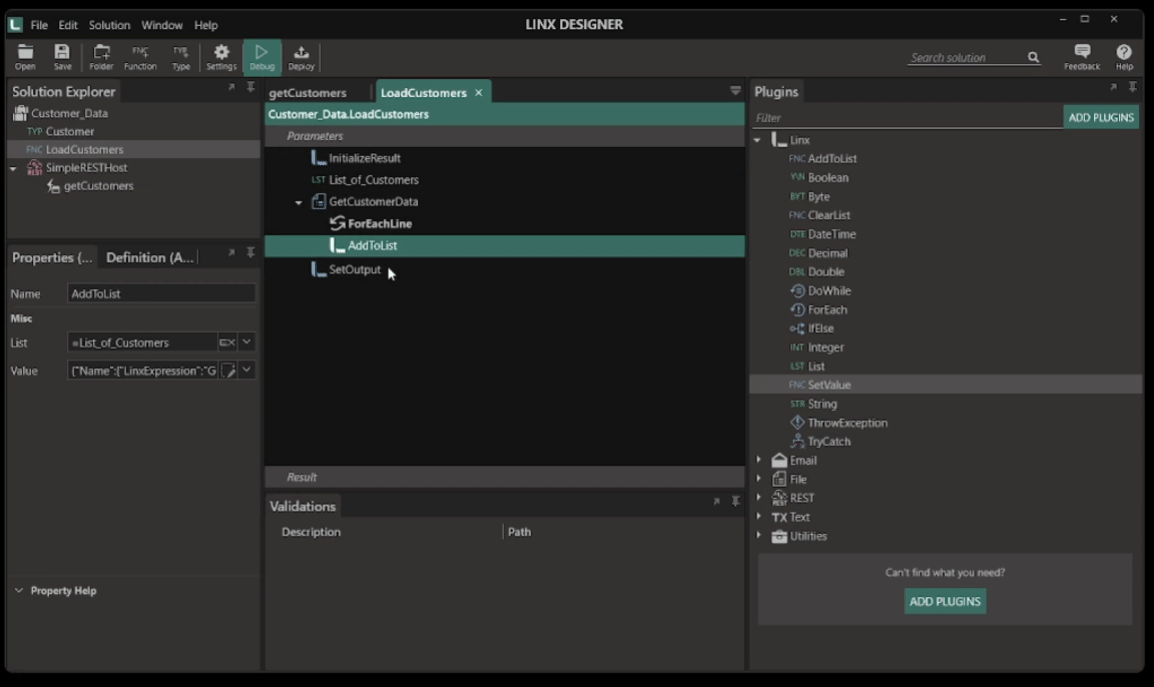Financial services organisations are constantly pressured to streamline operations while maintaining stringent security and compliance standards. As back-office processes become more complex, a flexible, scalable, and automated integration platform becomes essential.
Linx addresses these challenges by providing an advanced platform that delivers highly customisable solutions tailored to each organisation’s needs.
Addressing complexity with a custom approach
Take, for example, a tier-2 insurance company. As a large enterprise, it typically contends with a bulky, outdated payments system that’s costly to maintain and lacks essential API integration. It would need an agile, secure, and scalable system capable of integrating with its global banking networks and enterprise ERP systems to modernise this.
The insurance company would require processing multiple payment formats, with specific rules for approval, validation, and logging. A solution typically requires a unified platform, a combination of tools, or custom code to solve critical areas.
Real-Time payment integration
The insurance company will face significant complexity in managing payments across distinct business units—often with various payment formats and security measures—while integrating with global banks. Additionally, it must implement automated and manual approvals to reduce errors and maintain consistency.
Centralised reporting and audit capabilities
A key outcome will be consolidating payment approvals and processes into a single, centralised view to improve the visibility of payment activities. The solution should allow users to track each step in the payment process.
Flexibility and scalability
Modern systems must allow for volume and scale, particularly at the enterprise level. While there are several ways to accomplish this, the best solution is one that lays down the foundation of the work and can increase demands without requiring extensive reengineering.
How Linx solves the back-office burden
What makes Linx different from other low-code iPaaS solutions is its ability to serve as an all-rounder. Many low-code platforms are designed for specific use cases or domains, but Linx’s programming abstraction allows it to handle a broader range of tasks.
In this case, Linx served as the integration backbone, enabling secure API connections and real-time data flows while providing robust customisation options for the company’s unique payment workflows.
This flexibility is crucial for financial services organisations. Whether integrating legacy systems, building new payment workflows, or managing complex data transformations, Linx offers a solution that can scale and adapt without extensive code. This makes it particularly suited for environments where complexity and regulatory compliance go hand in hand.
Surfacing data
A common issue with back-office solutions is how to effectively surface, view, and track data for review and authorisation. Many iPaaS solutions operate behind the scenes, handling data movement, applying logic, and transforming information without providing users with a clear, actionable view of the data.
Introducing Stadium, a web app builder that works alongside Linx to visualise and interact with data.
Stadium follows the same design principles as Linx, leveraging a low-code, programming-centric paradigm that is well-suited for highly customised environments. Our corporate clients widely use them. Stadium allows quick connections to databases, APIs, or other data sources to create internal data views easily. This approach will enable teams to develop tailored dashboards, reports, and interactive views of their data without migrating it from their existing systems.
What sets Stadium apart is its ability to handle a variety of data inputs—whether it’s relational databases, web services, APIs, or even custom data objects built with scripts. This means organisations can keep using their existing tools and data while benefiting from real-time visibility and interaction.
By surfacing critical data in an accessible, customisable format, it empowers back-office teams to view their data and maintain control over their workflows while keeping their data securely synced with their existing systems.
Simplifying the implementation of complex back-office finance operations
Back-office finance operations are inherently complex, involving multiple workflows, rules, sub-rules, authorisations, and checks. Using a platform that can handle the intricate logic and processes in such an environment is crucial.
Linx, with its low-code iPaaS capabilities, delivers precisely that. It streamlines the development of back-end operations and integrates seamlessly with your existing tech stack, eliminating the need to fill gaps with custom code, third-party tools, or manual interventions. When combined with Stadium, teams can have a holistic view of critical data in real time for complete visibility and control over their operations.
End-to-end example: Data migrations
Organisations all over the globe are faced with immense pressure from their customers to match innovative financial services that competitor businesses offer. Legacy IT infrastructure and mainframe applications are not agile and flexible enough to build the innovative services their customers demand in today’s competitive environment.
Data migration projects can be complex and risky, especially involving significant application upgrades. Independent data migration assurance is crucial to mitigate risks and ensure data integrity. Assurance solutions can validate data accuracy and identify discrepancies by automating data retrieval, analysis, and comparison. This helps organizations maintain business continuity and avoid costly errors during the migration process.



